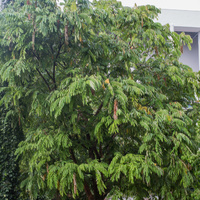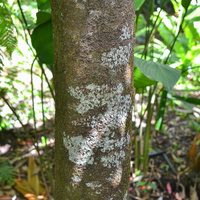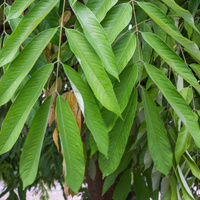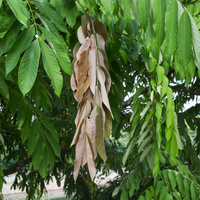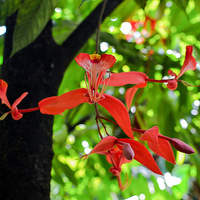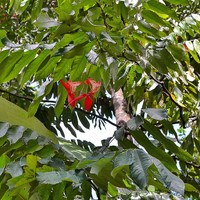Common name: Pride of Burma
Other common names: Amherstia
Description
Pride of Burma is a spectacular flowering tree originating in Southeast Asia and as its name suggests, is closely associated with the country of Myanmar (Burma).
It is a small tree, typically 10 to 15 m (30 to 50 ft) tall in cultivation but for reasons unknown never quite manages to reach above 5 m (15 ft) in some areas. The trunk is usually straight, slender and supports a rounded crown of large, gently weeping feathery leaves up to 1 m (3 ft) long.
The leaves are made up of glossy green elongated-oval leaflets arranged in pairs along the length and though evergreen, fall in the dry season in seasonally dry areas. The new leaflets emerge at the end of the dry season. First pinkish-bronze, soft and limp, then become green and leathery with age.
Flowering follows flushes of new leaf growth brought on by the transition from the dry to the rainy season but can be encouraged by watering during dry periods. The flowers are large, vivid pink to red and held in clusters that hang pendulum-like on long flowering stems. They create a spectacular display and remind of large orchids.
The fruit are flat seedpods, 10 to 20 cm (4 to 8 in) long, bright red and showy but are seldom produced by the tree.
Use
Pride of Burma is cultivated as a small flowering tree to add interest and colour to tropical gardens and landscapes.
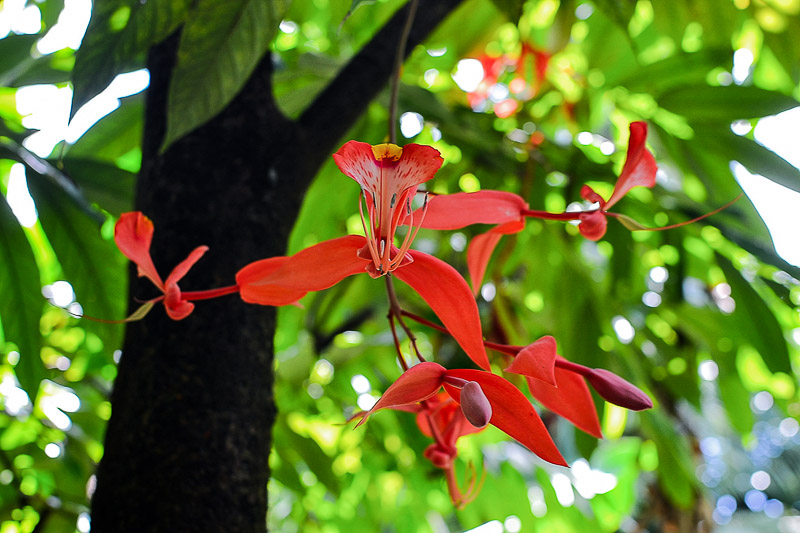
Climate
Grows and flowers naturally in humid tropical climates, generally frost-free areas with annual lows of 19 to 25°C, annual highs of 27 to 35°C, annual rainfall of 1200 to 6000 mm and a dry season of 5 months or less.
Growing
New plants are usually produced using air-layering or circumposing techniques, as seed are not always available.
Performs best on deep, rich free-draining clay and loam soils of a slightly acid to neutral nature, generally with a pH of 6.5 to 7.5 and on sites in partial sun.
Problem features
It rarely fruits and when it does the pods are usually only a few and with seed that are often infertile, making it unlikely to develop into an invasive species. It is assessed as a low weed risk species for Hawaii by the Hawaii Pacific Weed Risk Assessment project (HPWRA).
Where it grows
References
Books
-
Allen, O. N. & Allen, E. K. 1981, The Leguminosae : a source book of characteristics, uses, and nodulation, University of Wisconsin Press, Madison, Wisconsin
-
Barwick, M., et al. 2004, Tropical & subtropical trees : a worldwide encyclopaedic guide, Thames and Hudson, London
-
Holttum, R. E. & Enoch, I. C. 2010, Gardening in the tropics : the definitive guide for gardeners, Marshall Cavendish Editions, Singapore
-
Macmillan, H. F. 1943, Tropical planting and gardening : with special reference to Ceylon, 5th ed, Macmillan Publishing, London
-
Macoboy, Stirling 1982, Trees for flower and fragrance, Lansdowne Press, Sydney
-
National Research Council (Board on Science and Technology for International Development) 1979, Tropical legumes : resources for the future, The National Academies Press, Washington D. C.
-
Redhead, J. F. & Hall, J. B. 1992, Tropical forestry, Longman, London
